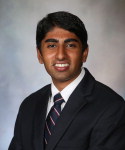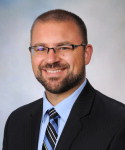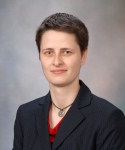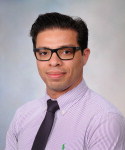Innovators pitch health care solutions at Alligator Tank, Mayo Clinic Florida
Mayo Clinic in Florida highlighted innovations in its second-annual Alligator Tank in November. Nine teams of Mayo entrepreneurs pitched their solutions to problems in the medical field before an audience and a panel of expert judges — or “alligators.”
Teams had to answer the following questions: What is the problem? What is the solution? Why you? Why now? What is the business case? The contestants were vying for the top three places, which advanced to the next level of the competition, Walleye Tank, held on Mayo’s Rochester campus in December.
The Alligator Tank is presented by the Mayo Clinic Office of Entrepreneurship and aims to promote the entrepreneurial community at Mayo. “The nine teams and their projects included:

Forecast Deep Learning: A next generation of continuous glucose monitoring for Type 1 diabetes that employs deep learning to glean information about a patient’s metabolic nature and generates a predictive and preventative model of care
Team: Adip Bhargav (MED ’21), student (pictured), Mayo Clinic Alix School of Medicine; Arjun Sadanand; Alex Choi; Cesar Garcia
Debriefing … There’s an App for That: An app that can be loaded with scenarios from the simulation center and allows faculty to click on a corresponding action as the scenario unfolds, making use of time in the center more efficient
Team: Heidi Felix, DHSc; Kristin Rosenbush; Nell Robinson

Prasanna Vibhute, M.D. (RD ’08), Department of Radiology, “Development of Noninvasive Imaging Biomarker for Preoperative Localization of Parathyroid Adenomas/Hyperplasia”
Kalita Cord Keeper: A device that clamps to the underside of a surgical stand with cord channels that allows medical personnel to neatly store cords and tubes without tangling during surgery
Team: Lori Kalita; Timothy Harshman

Brazen: A novel approach of diagnosing sports-related concussions using unique algorithms to test a player’s eye movements and determine abnormal brain activity after a head injury
Team: Jason Siegel, M.D. (I-1 ’13, N ’16, CCMN ’18, CTSA ’18) (pictured), Department of Neurology, Department of Critical Care Medicine; Jeff Prussack; Xuewei Wang, Ph.D.
Total Pocket: A device used in surgical cases that eliminates the need for adhesive to keep storage pockets in place on surgical drapes
Team: Timothy Harshman

Adjustable Fracture Nail: A nail used in orthopedic surgery for tibia fractures that allows for guided adjustment for each patient, resulting in better long-term outcomes
Team: Christine Mehner, M.D. (CBS ’15) (pictured), student, Mayo Clinic Graduate School of Biomedical Sciences; Marion (Toni) Turnbull, Ph.D. (NSCI ’17), research fellow

QT Grid: A ring-shaped device that allows for 360-degree recording of cortical electrical activity in the brain during surgery with simultaneous surgical resection, for patients with epilepsy
Team: Karim ReFaey, M.B., B.Ch. (NS ’18) (pictured), research fellow; Jake McKay, M.D. (I ’15) resident, Clinical Neurophysiology; William Tatum, D.O. (N ’09), Department of Neurology; Alfredo Quinones-Hinojosa, M.D. (NS ’16), chair, Department of Neurologic Surgery

Intra-Earplug MR Microphone: A small microphone that is embedded inside protective headphones or ear plugs worn by patients during an MRI procedure and that continuously monitors the sound pressure level of their ears and triggers a warning when levels exceed safe margins
Team: Chen Lin, Ph.D. (R-D ’18) (pictured), Department of Radiology; Prasanna Vibhute, M.D. (R-D ’08), Department of Radiology Robert Pooley, Ph.D. (R-D ’98), chair, Division of Medical Physics, Department of Radiology
Teams had two minutes to pitch their biomedical solutions to the panel of judges. The winning teams include:
- QT Grid
- Adjustable Fracture Nail
- Novel MRI Coil
Winning teams received $1,500 in travel money to Mayo’s Rochester campus for the Walleye Tank competition. Teams with winning proposals at that event will be awarded $10,000 in seed funding to continue advancement of their innovations.